From Manual to Smart: Pallet Inverters Transforming United Kingdom's Material Handling
Are you constantly battling with the slow, physically demanding process of swapping pallets in your UK facility? The manual restacking of goods is not just a drain on time; it's a major source of product damage and, more importantly, a significant risk to your employees' health and safety. This traditional method, a common bottleneck in many warehouses, quietly eats away at your operational efficiency and profit margins, making it harder to compete in today's fast-paced market. Imagine being able to flip an entire loaded pallet, exchange it, and have it ready to go in under 60 seconds, all with the push of a button. This isn't a future concept; it's the reality that pallet inverters are bringing to UK businesses, marking a critical shift from manual toil to smart, automated handling.
A pallet inverter is a piece of material handling equipment designed to securely clamp and rotate a fully loaded pallet by 180 degrees. This simple but powerful function allows for the fast, safe, and automated exchange of pallets. This technology is transforming material handling across the United Kingdom by drastically reducing the need for manual labor, which in turn lowers costs and improves worker safety. It also minimizes product damage and significantly speeds up logistics operations, boosting overall warehouse throughput and efficiency.
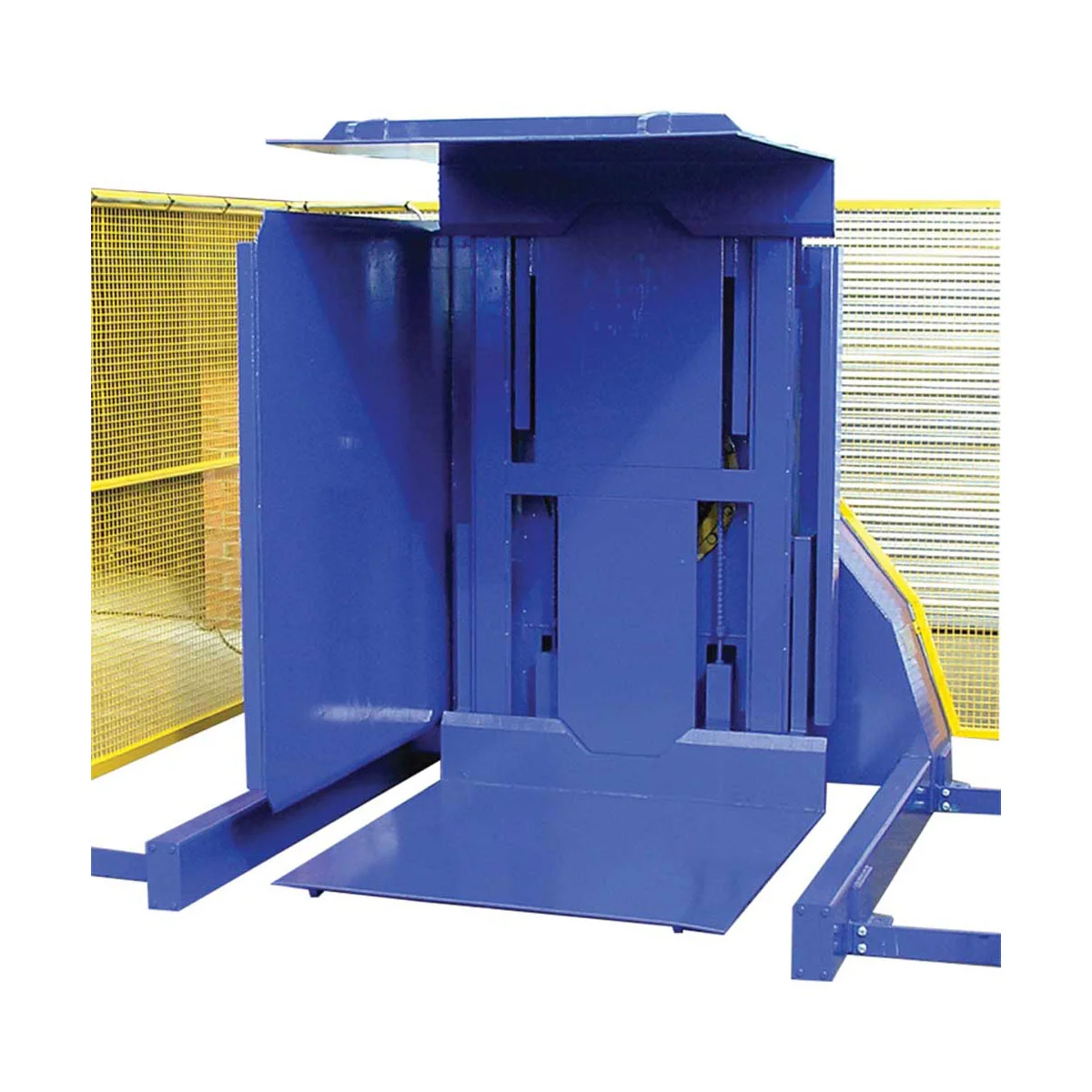
Throughout my career, from my first days as an engineer on the factory floor to now running my own company, SHJLPACK, I've seen countless operations transformed by a single, smart investment. The move to automation can seem daunting, but the impact of a machine like a pallet inverter is immediate and measurable. It solves some of the most fundamental problems in logistics. But how exactly does it tackle major business challenges like labor costs and safety? What are the different types available? And how can you make sure it delivers a real return on investment? Let's explore these questions together.
How Do Pallet Inverters Directly Address Rising Labor Costs and Safety Concerns in UK Warehouses?
In the UK, the combination of rising labor costs and stringent Health and Safety Executive (HSE) regulations puts immense pressure on any operation that relies on manual handling. You see the cost not just on payroll, but in the constant need to recruit and train staff for a physically demanding job with high turnover. Every time an employee has to bend and lift heavy items to restack a pallet, you are exposed to risks. These risks include reduced productivity, potential for costly worker compensation claims for back injuries, and the ever-present threat of non-compliance fines. A pallet inverter offers a direct and effective solution. It automates this high-risk, labor-intensive task, freeing your employees for more valuable roles and safeguarding your business against these financial and legal liabilities.
Pallet inverters directly address rising UK labor costs by automating the pallet exchange process, which can reduce the labor required for this task by up to 90%. This allows businesses to reallocate employees to higher-value activities instead of manual stacking. In terms of safety, the machine eliminates the dangerous manual lifting and repetitive bending that are leading causes of musculoskeletal disorders, thereby helping companies easily comply with UK HSE manual handling regulations and drastically cutting down on workplace injuries.
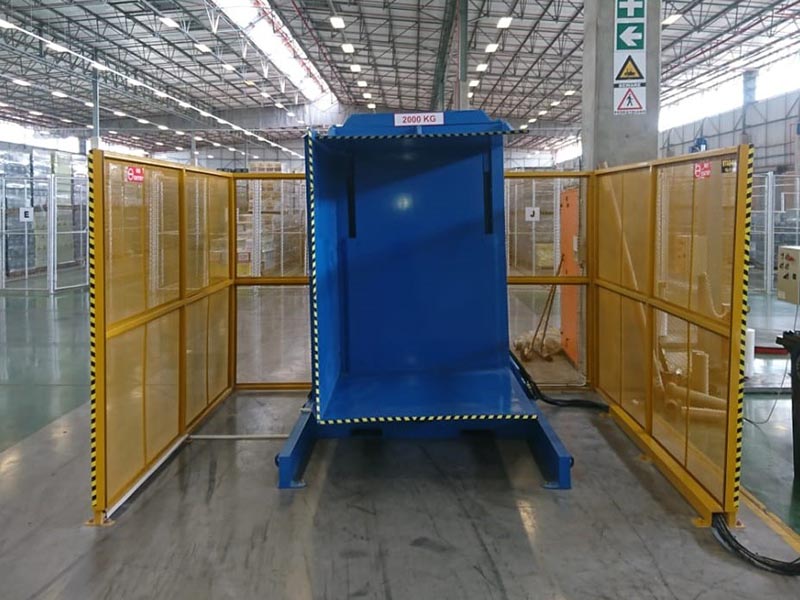
A Tale of Two Budgets: Manual vs. Automated
When I work with factory owners, we always start by looking at the numbers. The true cost of a manual process is often hidden. It's not just the hourly wage of the two or three workers it takes to break down a pallet. It's the lost time, the cost of damaged goods from drops, and the huge potential cost of a single workplace injury. I remember a client in the food processing industry in the UK. They were manually switching from wooden pallets to plastic hygiene pallets, a process that took two workers about 15 minutes per pallet. They were losing product, and their insurance premiums were high due to several minor back injury claims.
We installed a simple, standalone pallet inverter. The same task now took one forklift driver less than two minutes. The payback period wasn't just theoretical; they calculated a full return on their investment in just 16 months. This was based purely on saved labor and a reduction in damaged goods. The real, long-term value came from creating a safer workplace.
| Cost Factor | Manual Handling (Per Year) | Pallet Inverter (Per Year) |
|---|---|---|
| Direct Labor | High (2-3 employees' time) | Low (1 employee, minimal time) |
| Product Damage | Moderate to High (5-10% of handled goods) | Minimal (<1%) |
| Injury Risk/Cost | High (Insurance, claims, lost time) | Very Low |
| Throughput | Low (4-5 pallets/hour) | High (20-30 pallets/hour) |
| Capital Outlay | None | Initial Investment Required |
| Operating Cost | High (Wages) | Low (Energy, Maintenance) |
Meeting and Exceeding HSE Standards
The Health and Safety at Work Act is not something to be taken lightly in the UK. HSE guidelines on manual handling are clear: employers must avoid hazardous manual handling operations so far as is reasonably practicable. A pallet inverter is the definition of "reasonably practicable." It is an engineered solution that completely removes the hazard. Modern inverters are built with safety as the top priority. They come with safety cages, light curtains that stop the machine if a person gets too close, and hydraulic or electrical systems with built-in fail-safes. By installing a pallet inverter, a company isn't just complying with the law; it's demonstrating a proactive commitment to employee welfare. This simple change can transform a company's safety culture from reactive to preventive.
What Are the Key Differences Between Hydraulic and Electric Pallet Inverters for UK Operations?
You've decided a pallet inverter is the right move for your facility, but now you face a critical choice: hydraulic or all-electric? This decision can feel technical, but it has very practical consequences for your daily operations in the UK. Choosing the wrong type could mean dealing with potential oil contamination in a clean environment or having a machine that struggles with the heavy-duty demands of your industry. A powerful hydraulic system might seem like the obvious choice for strength, but what if your factory has a low-noise policy? An electric model is clean and quiet, but will it have the raw power needed for your 1,500 kg loads? Understanding the fundamental differences in how they work, what they cost to run, and where they excel is the key to selecting a machine that will be a long-term asset, not a short-term headache.
The main difference between the two is their power mechanism and best-fit environment. Hydraulic pallet inverters use oil pressure to deliver superior clamping force and lifting power, making them the standard for heavy industrial applications like steel, automotive, and construction materials. All-electric pallet inverters use electric motors and actuators, resulting in cleaner, quieter, and more precise operation, which is essential for sensitive UK industries such as food and beverage, pharmaceuticals, and electronics manufacturing.
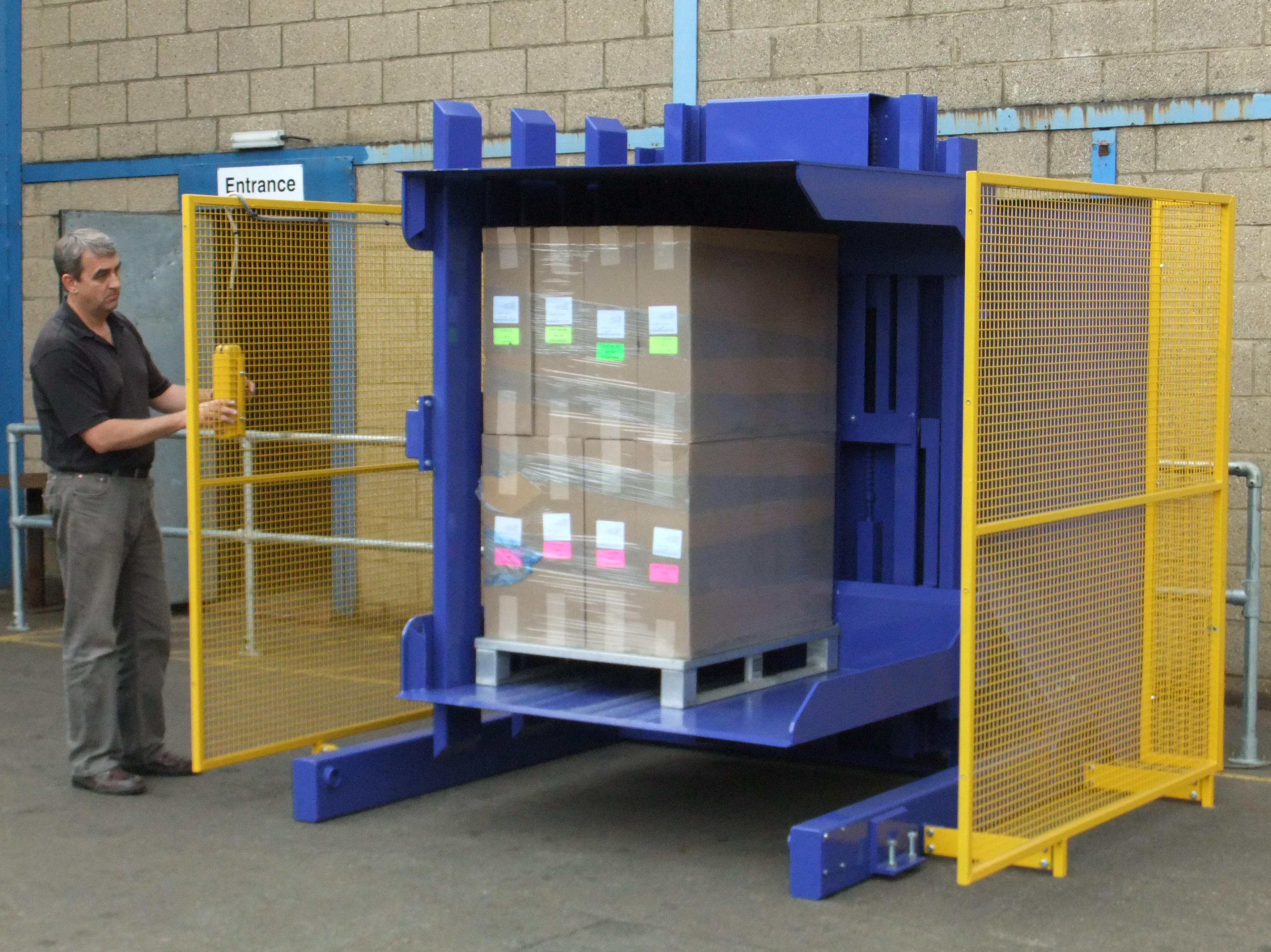
Performance and Environment: A Head-to-Head Comparison
As an engineer, I love breaking down how things work. The choice between hydraulic and electric is a classic engineering trade-off between raw power and precision control. Hydraulic systems are simpler in some ways—a pump, valves, and a cylinder—and they can generate immense force easily. This makes them workhorses. If you are moving bags of cement, steel coils, or engine blocks, hydraulics are reliable and cost-effective.
Electric systems are more complex, using precision-controlled motors, ball screws, or roller screws. This complexity brings huge benefits. There is zero risk of an oil leak contaminating your products, which is a non-negotiable requirement in the food and pharma sectors. They are also significantly quieter, a major factor for facilities located near residential areas or for companies aiming to improve the workplace environment for their staff. The movement is also more precise and programmable, which can be an advantage when handling delicate or oddly shaped loads.
Here's a simple breakdown for making the right choice for your UK operation:
| Feature | Hydraulic Pallet Inverter | Electric Pallet Inverter |
|---|---|---|
| Load Capacity | Very High (Typically 1500kg - 3000kg+) | High (Typically up to 1500kg) |
| Clamping Force | Excellent, robust | Good, highly controllable |
| Speed | Fast cycle times | Can be slower, but very smooth |
| Cleanliness | Risk of oil leaks | Excellent, no oil |
| Noise Level | Moderate to High | Very Low |
| Best For | Heavy industry, outdoor use, raw materials | Food, pharma, electronics, cleanrooms |
Analyzing the Total Cost of Ownership
Your Chief Financial Officer will want to know about more than just the purchase price. They'll want to know the Total Cost of Ownership (TCO). This is where the hydraulic vs. electric debate gets interesting. Hydraulic machines often have a lower initial purchase price. However, their maintenance involves checking for hose leaks, changing hydraulic oil and filters, and managing potential spills. While generally reliable, a major hydraulic failure can be messy and expensive to clean up.
Electric pallet inverters might have a higher upfront cost, but their long-term operating costs can be lower. They are typically more energy-efficient because they only draw significant power when they are actually moving, whereas a hydraulic pump may run continuously. Maintenance is often simpler and cleaner, involving checks on motors, gearboxes, and electrical components. For any UK business focused on sustainability and reducing energy consumption—a common goal today—the electric option is often the more forward-thinking choice.
How Can Integrating a Pallet Inverter into an Automated Line Boost ROI for UK Manufacturers?
You have made significant investments in automating your production or packaging line. You have state-of-the-art robotic palletizers and a network of smart conveyors moving goods seamlessly through your facility. But then, everything grinds to a halt at one specific point: where a worker has to manually intervene to switch a pallet from an internal wooden one to a plastic one for shipping, or to inspect the bottom of a load. This single manual break in an otherwise automated chain is a major bottleneck. It completely undermines the efficiency gains you've worked so hard to achieve elsewhere. By integrating a pallet inverter directly into your automated line, you can finally close this gap. You create a truly hands-off, continuous flow that maximizes your throughput and finally unlocks the full return on investment (ROI) of your entire automation strategy.
Integrating a pallet inverter into an automated line boosts ROI by eliminating the manual handling bottleneck, which dramatically increases the overall line speed and hourly output. It enables fully automated processes like switching from warehouse pallets to shipping pallets or removing freezer spacers without human intervention. This continuous flow reduces cycle times, minimizes the risk of damage associated with manual touchpoints, and allows the upstream and downstream automation (like robotics and wrappers) to operate at their maximum designed capacity, thus improving the Overall Equipment Effectiveness (OEE) of the entire line.
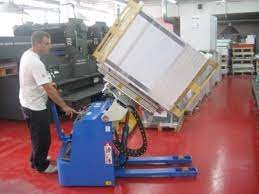
The Technical Blueprint for Integration
From my experience designing packaging lines, successful integration is all about communication between machines. A modern pallet inverter doesn't just sit there; it becomes a smart node in your factory's nervous system. The process typically works like this: a loaded pallet arrives on an in-feed conveyor. Sensors confirm its position, and the automated line's main Programmable Logic Controller (PLC) sends a signal to the inverter. The inverter's own PLC takes over, initiating the clamping and rotation cycle. While this happens, an automated dispenser places the new pallet into position. After rotation, the load is placed on the new pallet and released onto an out-feed conveyor to continue its journey to the stretch wrapper or loading bay.
The key to making this work is ensuring all components speak the same language. This involves programming the PLCs and setting up safety interlocks. For example, the in-feed conveyor must not send another pallet until the inverter signals that it is clear. Light curtains and physical guarding must be integrated into the line's overall emergency stop circuit. A good supplier won't just sell you a machine; they will work with your engineers to ensure this digital handshake is perfect.
From Bottleneck to Booster: Quantifying the Gains
The impact of removing this bottleneck is best measured using a metric factory managers know well: Overall Equipment Effectiveness (OEE). OEE is a product of Availability, Performance, and Quality. An integrated inverter improves all three:
- Availability: It eliminates downtime caused by waiting for a manual swap. Even if a manual swap takes only 5 minutes, doing that 10 times an hour means your line is stopped for 50% of the time. Automation reduces that stop time to under a minute, dramatically increasing availability.
- Performance: The automated line can run at its true maximum speed. There are no slowdowns as the pallet approaches the manual station. The entire system runs at a consistent, predictable, and faster pace.
- Quality: It removes the risk of human error. No more dropped boxes, improperly stacked layers, or damaged packaging from manual handling. The automated process is 100% repeatable, ensuring every pallet is handled perfectly.
I worked with a large distribution center in the Midlands that integrated an inverter into their main outbound line. They calculated that by just eliminating that one manual touchpoint, their overall line throughput increased by 22%. That's a massive gain in efficiency and capacity without having to add another full packaging line.
What Are the Critical Maintenance Checks to Ensure Longevity for a Pallet Inverter in a High-Volume UK Facility?
You've made the smart investment. The pallet inverter is installed and has already started to improve the efficiency and safety of your UK facility. It's a robust piece of equipment, but in a high-volume environment, no machine is immune to wear and tear. The temptation can be to "set it and forget it." However, ignoring regular maintenance is a recipe for disaster. It can lead to sudden, unexpected downtime that halts your entire line, forces you to pay for expensive emergency repairs, and ultimately shortens the productive life of your machine. The good news is that a simple and structured maintenance plan, focusing on a handful of critical checkpoints, is all it takes to keep your inverter running like new for years to come, protecting your investment and ensuring operational reliability.
To ensure the longevity of a pallet inverter, the most critical maintenance checks include daily visual inspections for any signs of damage or leaks; weekly checks of hydraulic fluid levels (if applicable) and the security of all electrical connections; monthly lubrication of all moving parts such as chains, bearings, and pivot points; and a comprehensive annual service by a qualified technician to inspect the structural integrity, power unit, and safety systems.
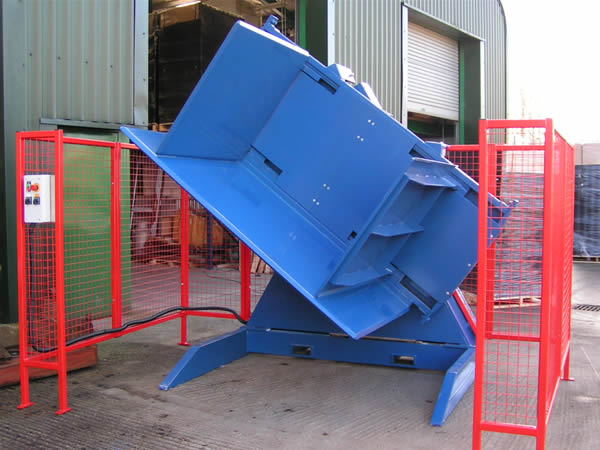
Your Practical Maintenance Checklist
As someone who has built these machines, I can tell you that most issues start small. A loose bolt, a frayed wire, a minor oil drip. Catching these things early is the secret to avoiding major failures. I always advise my clients to implement a simple checklist that operators and maintenance staff can follow. It empowers your team to take ownership of the equipment's health. This isn't complex; it's about disciplined, routine observation.
Here is a basic template that you can adapt for your specific model:
| Frequency | Checkpoint | Action Required |
|---|---|---|
| Daily | General Area | Check for debris around the machine. Ensure it is clean. |
| Visual Inspection | Look for any visible damage, loose bolts, or oil/fluid drips. | |
| Safety Features | Test the emergency stop button. Check that light curtains are clean and operational. | |
| Weekly | Hydraulic System | Check hydraulic fluid level. Inspect hoses for cracks or abrasions. |
| Electrical System | Check that all electrical cables are secure and show no signs of wear. | |
| Control Panel | Ensure all lights, buttons, and switches are functioning correctly. | |
| Monthly | Lubrication | Lubricate all chains, bearings, and pivot points as per the manufacturer's manual. |
| Clamping System | Check the clamping pressure to ensure it is within the specified range. | |
| Fasteners | Check and tighten all major structural bolts and fasteners. | |
| Annually | Professional Service | Schedule a full service with a qualified technician. |
| Structural Integrity | The technician should inspect all welds and structural components for stress fractures. | |
| Power Unit | A deep service of the hydraulic power pack or electric motors. |
The Next Level: Predictive Maintenance and IoT
For forward-thinking leaders managing large-scale operations, we can take maintenance a step further. This is where we truly move from a "smart machine" to a "smart system." The goal is to move from preventive maintenance (fixing things on a schedule) to predictive maintenance (fixing things right before they are about to fail).
This is achieved by integrating simple IoT (Internet of Things) sensors into the pallet inverter. For a hydraulic model, we can add a pressure sensor that monitors for slow pressure drops, indicating a future leak. A temperature sensor on the power pack can warn of overheating before it causes damage. For an electric model, a vibration sensor on the main motor can detect changes in its pattern, which could signal that a bearing is beginning to wear out. This data is fed in real-time to your central maintenance system or MES. Instead of your team having to guess, the machine itself tells you when it needs attention. This is the future of industrial maintenance. It maximizes uptime, reduces costs, and aligns perfectly with the goals of a fully digital, Industry 4.0 factory.
Conclusion
An investment in a pallet inverter is a strategic move. It is a direct step towards a safer, more efficient, and more profitable UK manufacturing and logistics operation.
My Insights
When I speak with leaders like Javier Morales, who run massive operations like a 2-million-ton steel mill, the conversation is never just about one machine. It's about solving bigger problems: aging equipment, cost pressures, and the drive for digital transformation.
I see the same challenges in the UK that Javier faces in Mexico. A pallet inverter isn't just a tool to flip loads. It's a solution. It tackles the rising cost of labor and safety compliance head-on. It's a stepping stone to full automation, boosting the OEE of your entire line. For a leader focused on an 8% cost reduction and 95% uptime, this isn't a 'nice-to-have'; it's a strategic asset. My journey from an engineer on the factory floor to a factory owner taught me one thing: the right investment in technology pays for itself many times over, not just in money, but in safety and stability. A pallet inverter is one of those investments. It’s a practical step towards the smart, efficient factory of the future that leaders like Javier are building.



